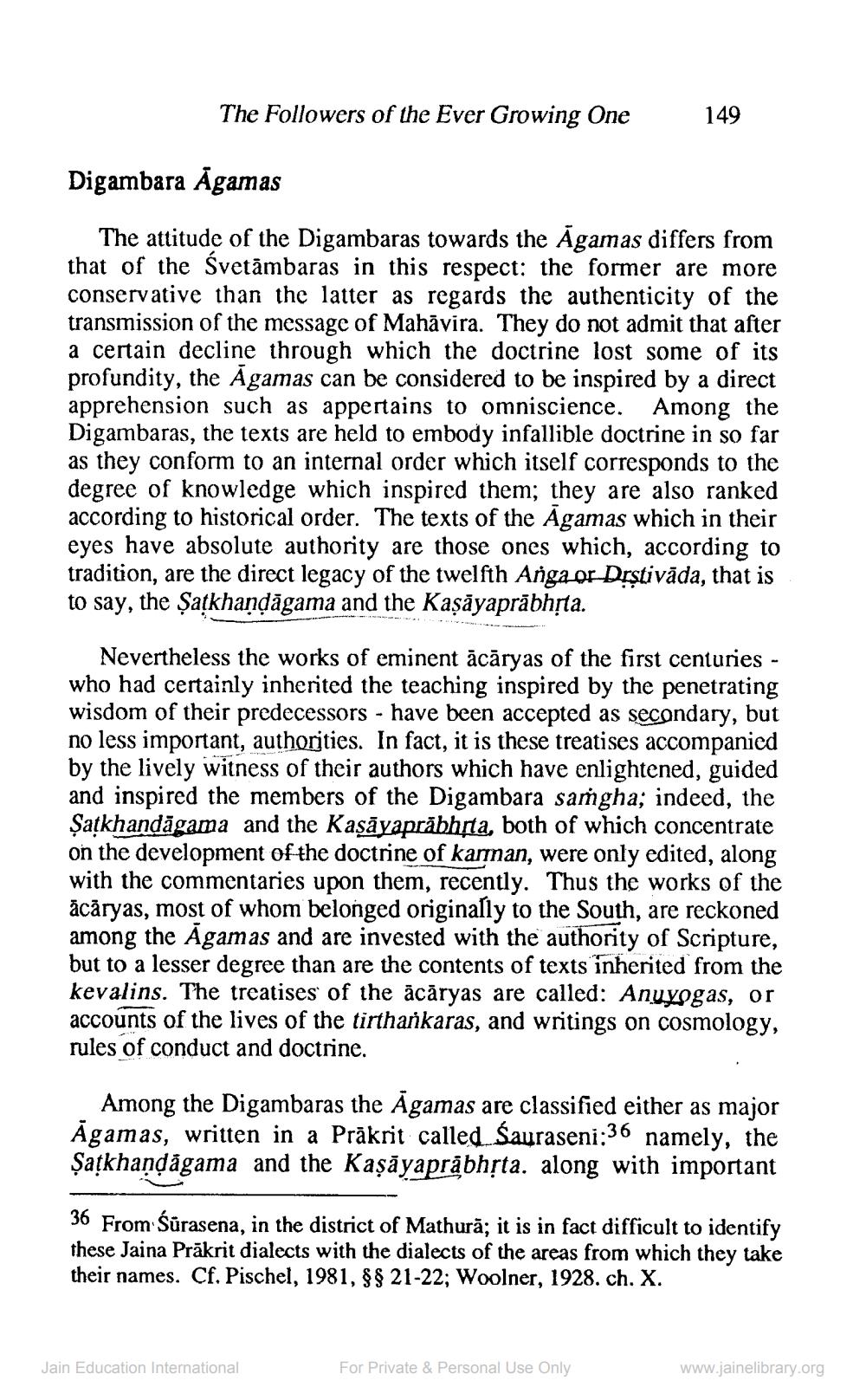________________
The Followers of the Ever Growing One
149
Digambara Āgamas
The attitude of the Digambaras towards the Agamas differs from that of the Svetämbaras in this respect: the former are more conservative than the latter as regards the authenticity of the transmission of the message of Mahāvira. They do not admit that after a certain decline through which the doctrine lost some of its profundity, the Agamas can be considered to be inspired by a direct apprehension such as appertains to omniscience. Among the Digambaras, the texts are held to embody infallible doctrine in so far as they conform to an internal order which itself corresponds to the degree of knowledge which inspired them; they are also ranked according to historical order. The texts of the Agamas which in their eyes have absolute authority are those ones which, according to tradition, are the direct legacy of the twelfth Anga or Dorstivāda, that is to say, the Șatkhandāgama and the Kaşāyaprābhịta.
Nevertheless the works of eminent ācāryas of the first centuries - who had certainly inherited the teaching inspired by the penetrating wisdom of their predecessors - have been accepted as secon
but no less important, authorities. In fact, it is these treatises accompanied by the lively witness of their authors which have enlightened, guided and inspired the members of the Digambara samgha; indeed, the Șatkhandāgama and the Kasāyaprăbhrta, both of which concentrate on the development of the doctrine of karman, were only edited, along with the commentaries upon them, recently. Thus the works of the ācāryas, most of whom belonged originally to the South, are reckoned among the Agamas and are invested with the authority of Scripture, but to a lesser degree than are the contents of texts inherited from the kevalins. The treatises of the ācāryas are called: Anuyogas, or accounts of the lives of the tirthankaras, and writings on cosmology, rules of conduct and doctrine.
Among the Digambaras the Agamas are classified either as major Agamas, written in a Prākrit called Sauraseni:36 namely, the Șatkhaņdāgama and the Kaşāyaprabhsta. along with important
36 From Śūrasena, in the district of Mathurā; it is in fact difficult to identify these Jaina Prākrit dialects with the dialects of the areas from which they take their names. Cf. Pischel, 1981, $ $ 21-22; Woolner, 1928. ch. X.
Jain Education International
For Private & Personal Use Only
www.jainelibrary.org




